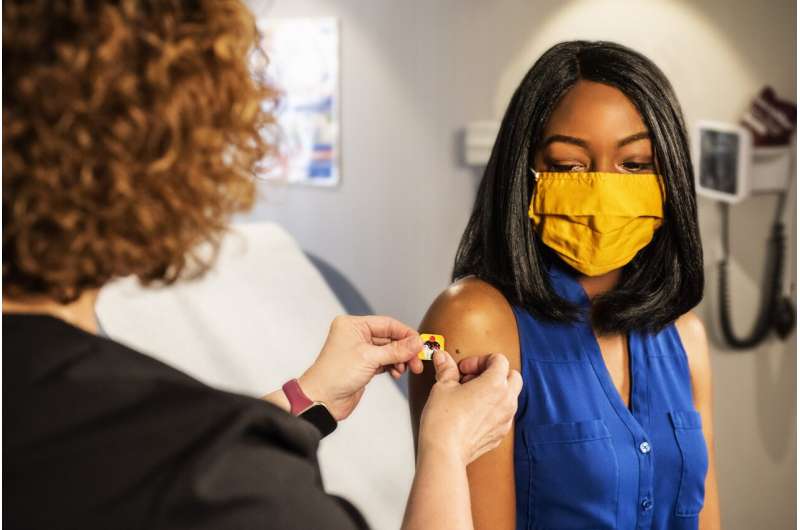This article has been reviewed according to Science X'seditorial processandpolicies.Editorshave highlighted the following attributes while ensuring the content's credibility:
fact-checked
peer-reviewed publication
trusted source
proofread
Study: Socially vulnerable carry disproportionate COVID burden due to lower likelihood of vaccination

The burden of the pandemic has disproportionately affected socially vulnerable populations. One of the first studies to look at the intersection of social vulnerability with COVID-19 vaccine utilization and effectiveness has found that while vaccination rates have varied substantially between socially vulnerable and communities that are not socially vulnerable, there has been no difference in vaccine effectiveness between those who are socially vulnerable and those who are not.
"We found that protection against emergency room and urgent care center visits, hospitalization and death conveyed by a COVID-19 mRNA vaccination did not vary bysocial vulnerability," said study co-author Brian Dixon, Ph.D., MPA.
"But because social vulnerability did play a role in whether individuals are vaccinated or not—and socially vulnerable communities have lesser vaccine coverage—socially vulnerable individuals and their communities are bearing a larger burden during the pandemic. They are having poorer outcomes as they are less likely to be vaccinated."
In the study, conducted by the U.S. Centers for Disease Control and Prevention's VISION Network, social vulnerability was calculated using the CDC and Agency for Toxic Substances and Disease Registry Social Vulnerability Index, which captures 15 attributes across four themes:
- socioeconomic status
- household composition and disability
- minority status and language
- housing type and transportation
Calculation of the social vulnerability index produces a number that can be used to determine how vulnerable a community might be in time of crisis, such as a natural disaster or a pandemic.
This study evaluated electronic health record (EHR) data and immunization records from adults age 18 and older.
"Socially vulnerable individuals may live in densely populated buildings and neighborhoods, travel via crowded public transportation and often hold jobs that are not conducive to remote work. So, they are more susceptible to catching COVID," said co-author Katie Allen, B.S., a data scientist with Regenstrief Institute. "And they may not have the resources to seekmedical carewhen they are getting sick, leading to adverse medical outcomes."
"Initial COVID-19 vaccination coverage remains lower in communities with higher social vulnerability and booster rates are even lower," said Dr. Dixon. "This study shows the need to focus public health efforts on vaccine coverage as well as vaccine effectiveness."
The findings are published in the journalClinical Infectious Diseases.
More information:亚历山德拉F道尔顿等之间的关系cial Vulnerability and Coronavirus Disease 2019 Vaccination Coverage and Vaccine Effectiveness,Clinical Infectious Diseases(2023).DOI: 10.1093/cid/ciad003



















